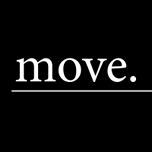There are 3 main types of headaches, neck pain and migraines including:
- Cervicogenic Headaches (CGH): Headaches that result from referred pain associated with sensitivity, stiffness, or pain in the upper neck (cervical) joints. Often related to poor posture or positions that put strain or stress through the neck.
- Migraines: Migraines often involve more severe throbbing pain around the head, and are often associated with light or noise sensitivity, nausea or dizziness.
- Tension type headaches (TTH): These types of headaches commonly involve generalised, tension-type pain around the head, and are commonly related to stress
Treatment of Headaches & Migraines
There are many ways you can treat headaches, including a hands-on treatment approach as well as general exercise and lifestyle modifications.
Physiotherapy
A Physiotherapist experienced in the treatment of headaches or migraines can help diagnose your problem, and plan what treatment would be most beneficial for you.
They would discuss the history of your headaches and goals for treatment followed by physical assessment of your neck, as well as other contributing factors such as posture, upper back mobility, and strength of neck and postural muscles.
There is strong evidence supporting manual therapy (soft tissue massage and joint mobilisations) as well as exercise-based therapy to relieve headaches providing a long lasting effect!
Physiotherapy is most effective for cervicogenic headaches, but we can also help ease migraines or tension-type headaches that have a cervical contribution, as well as provide advice to relieve stress contributing to headaches. Find out more about our treatment of headaches and migraines here.
Exercise
Exercise is strongly supported and proven within literature to manage headaches. Exercises may involve strengthening deep muscles within the neck that help support the head and upper cervical joints. We then progress to strengthening upper back and postural muscles, stretching relevant tight muscles, and eventually consolidating these exercises into more functional exercises to maintain neck and upper body strength.
An individual exercise programme can provide you with specific, targeted exercise for your needs.
Ergonomics and work posture
Poor posture can put increased pressure or strain through the neck, sensitising neural structures and contributing to headache pain. Therefore targeting posture through stretches, exercises, and adjusting desk ergonomics can be beneficial in preventing another onset of headaches
Doctor/GP
Your GP is able to assist in managing migraines or tension type headaches – able to explore other medical avenues such as medication or other medical management techniques should there be any concerns about other contributors outside of the neck and musculoskeletal factors (such as stress, hormones, or diet)
Advice
Depending on your individual circumstances and symptoms, you may need to see your GP or Physiotherapist for further treatment.
Consider learning about correct ergonomic positioning and your work or family environment, including your posture.
Sleeping positions may also influence headaches or migraines. Often the right pillow for your body can ease cervical headache pain by ensuring you have the correct head and neck positioning while you sleep.
Need More Information?
To book see any of our experienced and qualified allied health staff about this issue, you can:
- Call us on (08) 8373 5655
- Use our Online Booking Gateway (available 24/7) to choose your appointment time
- Drop in to see us in person
- Email us on info@moveforbetterhealth.com.au




